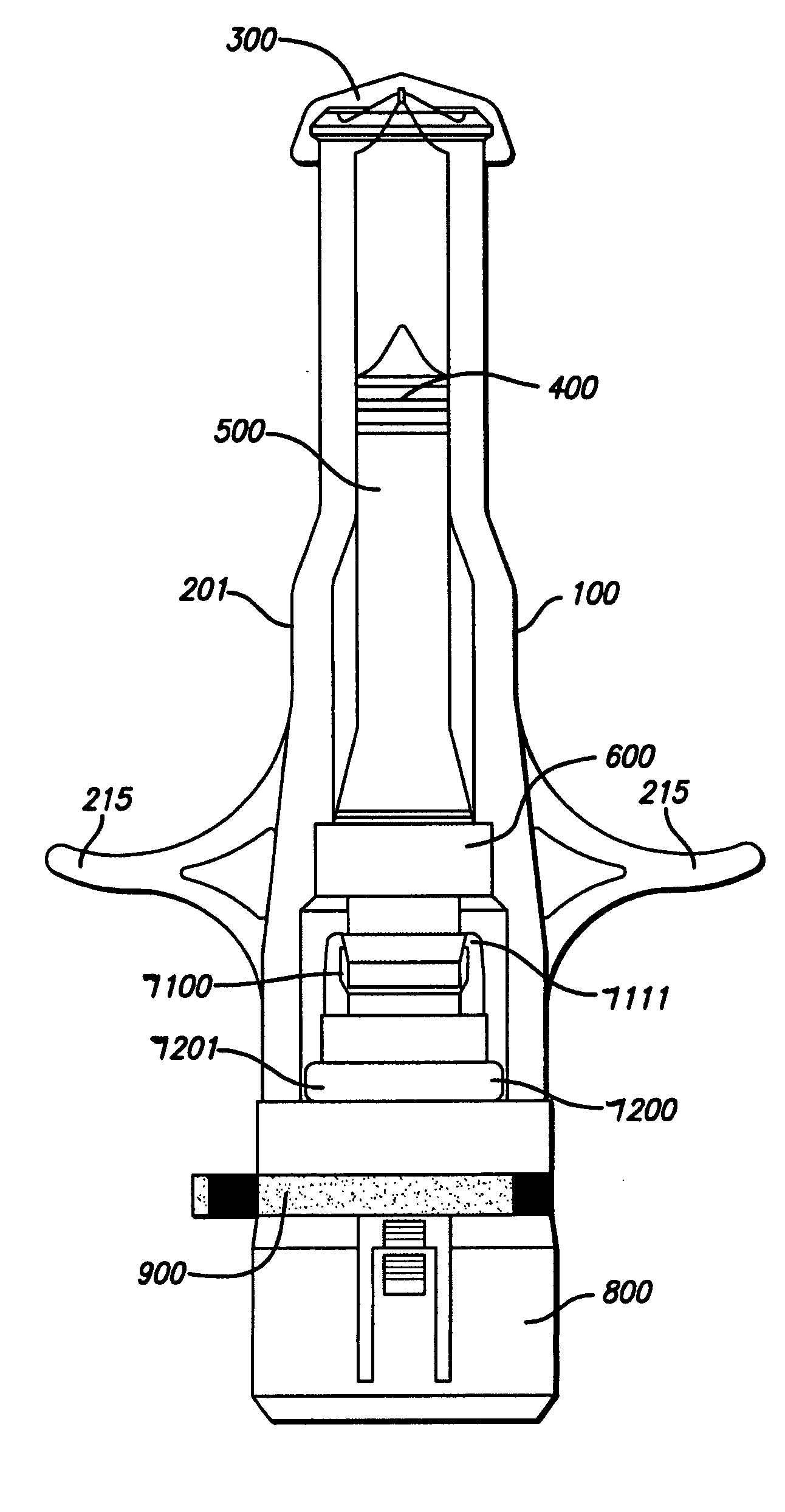Method and apparatus for needle-less injection with a degassed fluid
- Summary
- Abstract
- Description
- Claims
- Application Information
AI Technical Summary
Benefits of technology
Problems solved by technology
Method used
Image
Examples
example 1
Modular Gas-Pressured Needle-Less Injector
[0052] For ease in describing the various elements of the modular gas-pressured needle-less injector, the following spatial coordinate system will apply thereto. As depicted in FIG. 1c, a central axis is defined through the length of a gas-pressured needle-less injector 100. This central axis 1 has one terminus at the proximate end 2 of the needle-less injector 100, defined as that end of the device in contact with an injection surface during normal operation of the injector. The other terminus of the central axis is at the distal end 3 of the injector 100, defined as that end of the device furthest from the injection surface when the injector is positioned perpendicular to the injection surface. Thus, various elements of the device of the instant invention may be described with reference to their respective proximate and distal portions, as well as their central axes.
[0053] As depicted in FIG. 1, a gas-pressured needle-less injector 100 i...
example 2
Gas-Powered Needle-Less Injector
[0094] As depicted in FIG. 17, the needle-less injector 1000 may be used as a single dose disposable injector to deliver a dosage of degassed fluid. Precise delivery may be achieved through an orifice with a diameter of approximately 0.0032″ (approximately 0.08 mm). However, larger or smaller diameters, ranging from 0.05 mm to 1.5 mm, may be used, as long as accurate penetration of the skin and delivery of the degassed fluid can be maintained. The degassed fluid is linearly accelerated via pneumatic propulsion. Safety is maintained and inadvertent activation of the needle-less injector 1000 is avoided via a pressure (e.g., resistance) sensitive triggering feature which allows for proper tensioning of the nozzle and orifice at the injection site prior to automatic medication deployment. For example, activation of the needle-less injector 1000 will not occur until the injector is properly positioned to provide the required resistance from the skin surf...
example 3
Needle-Less Injector Including a Latch
[0102] As depicted in FIG. 26, a needle-less injector comprises a tubular body 2001, which retains a cartridge 2003 pre-filled with a degassed fluid, and visible through one or more windows 2004 in the body 2001. The body 2001 has an aperture in the end to permit a nozzle 2005 to protrude. A finger nut 2006 is used by the operator to control the dose volume, and has markings 2007 thereon to indicate its position relative to a scale 2008 on sliding sleeve 2002, which is arranged co-axially on the body 2001.
[0103] In FIG. 27, the cartridge 2003 is shown filled with degassed fluid 2009, and fitted with a nozzle 2005 having an orifice 2010, and a free piston 2032. The nozzle 2005 may be a separate component as shown, sealingly fixed into the cartridge 2003, or may be formed integrally with the cartridge 2003. Preferably the cartridge 2003 is made of a transparent material compatible with the degassed fluid 2009, to enable the contents to be viewed...
PUM
 Login to View More
Login to View More Abstract
Description
Claims
Application Information
 Login to View More
Login to View More - R&D
- Intellectual Property
- Life Sciences
- Materials
- Tech Scout
- Unparalleled Data Quality
- Higher Quality Content
- 60% Fewer Hallucinations
Browse by: Latest US Patents, China's latest patents, Technical Efficacy Thesaurus, Application Domain, Technology Topic, Popular Technical Reports.
© 2025 PatSnap. All rights reserved.Legal|Privacy policy|Modern Slavery Act Transparency Statement|Sitemap|About US| Contact US: help@patsnap.com



